lives in bee nests and probably disperses on bees, but feeding behavior is unknown
Celaenosthanus Vitzthum, 1930Vitzthum, 1930:
Vitzthum, H. G. 1930. Acarologische Beobachtungen. (14 Reihe.). Zoologische Jahrbücher. Abteilung für Systematik, Geographie und Biologie der Tiere 281-350.
Superorder Parasitiformes » Order Mesostigmata » Suborder Trigynaspida » Infraorder Antennophorina » Family Diplogyniidae » Genus Celaenosthanus
Celaenosthanus trigonophilus Vitzthum, 1930Vitzthum, 1930:
Vitzthum, H. G. 1930. Acarologische Beobachtungen. (14 Reihe.). Zoologische Jahrbücher. Abteilung für Systematik, Geographie und Biologie der Tiere 281-350.
Female: based on the presence of single dorsal shield (Fig. 1), oviporeovipore:
Opening of female which serves as an outlet for oviposition. In Astigmata and non-astigmatan Oribatida, situated between genital valves. In Astigmata, not to be confused with the copulatory opening (which serves for sperm intake).
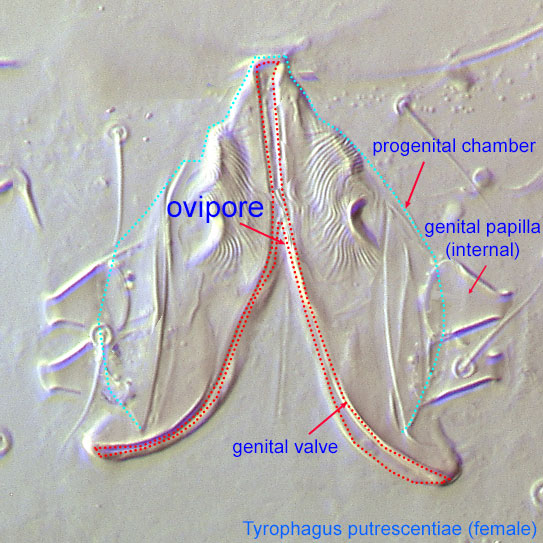 covered by paired latigynal shieldslatigynal shield:
covered by paired latigynal shieldslatigynal shield:
A pair of sclerites laterad the mesogynal shield in some female parasitiform mites, that help protect the genital opening; usually bearing one or more pairs of setae and sometimes fused to other genital or ventral elements. The single female genital shield in the Gamasina may represent a fusion of the latigynal and mesogynal shields. Also known as latigynial shield.
and unpaired mesogynal shieldmesogynal shield:
An unpaired median sclerite in some female parasitiform mites that helps protect the genital opening; usually nude and sometimes fused to other genital or ventral elements. The single female genital shield in the Gamasina may represent a fusion of the latigynal and mesogynal shields. Also known as mesogynial shield.
(Fig. 2) and the absence of ambulacraambulacrum:
The claws and empodium of the apotele or pretarsus.
(including claws and pulvilluspulvillus:
a membranous, pad-like structure associated with the claws in Mesostigmata.
) on tarsitarsus:
Terminal segment (also known as podomere or palpomere) of legs or palps. In Parasitoformes it can be subdivided into telotarsus and basitarsus.
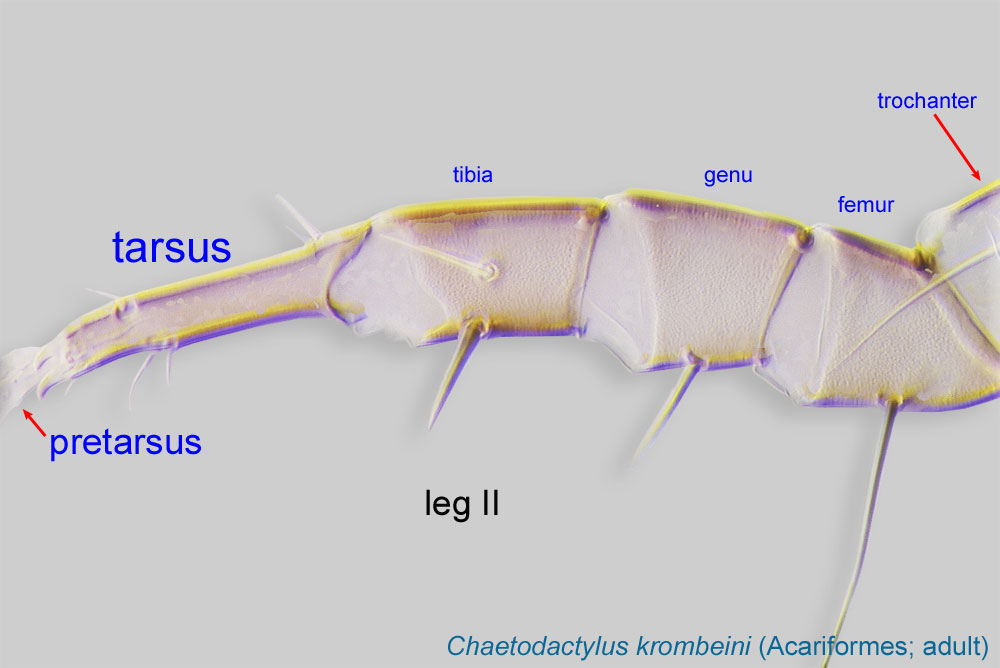 I (Fig. 2), it belongs to the infraorder Antennophorina, suborder Trigynaspida.
I (Fig. 2), it belongs to the infraorder Antennophorina, suborder Trigynaspida.
Female: Additional character states separate this genus from other genera in Antennophorina: 4-5 pairs of setae on latigynal shieldslatigynal shield:
A pair of sclerites laterad the mesogynal shield in some female parasitiform mites, that help protect the genital opening; usually bearing one or more pairs of setae and sometimes fused to other genital or ventral elements. The single female genital shield in the Gamasina may represent a fusion of the latigynal and mesogynal shields. Also known as latigynial shield.
(Fig. 2), mesogynal shieldmesogynal shield:
An unpaired median sclerite in some female parasitiform mites that helps protect the genital opening; usually nude and sometimes fused to other genital or ventral elements. The single female genital shield in the Gamasina may represent a fusion of the latigynal and mesogynal shields. Also known as mesogynial shield.
truncated anteriorly (Fig. 2), dorsal shield and ventral opisthosomaopisthosoma:
Body division posterior to legs IV; usually there is no distinct boundary delimiting this part of idiosoma.
hypertrichoushypertrichous:
With many irregularly arranged setae.
(Figs. 1,2), anal shieldanal shield:
In Mesostigmata, a ventral shield bearing the anal opening and circumanal setae (adanal or postanal setae), but without any ventral setae or pores (lyrifissures) on it. If ventral setae are present on shield than referred to as a ventrianal shield.
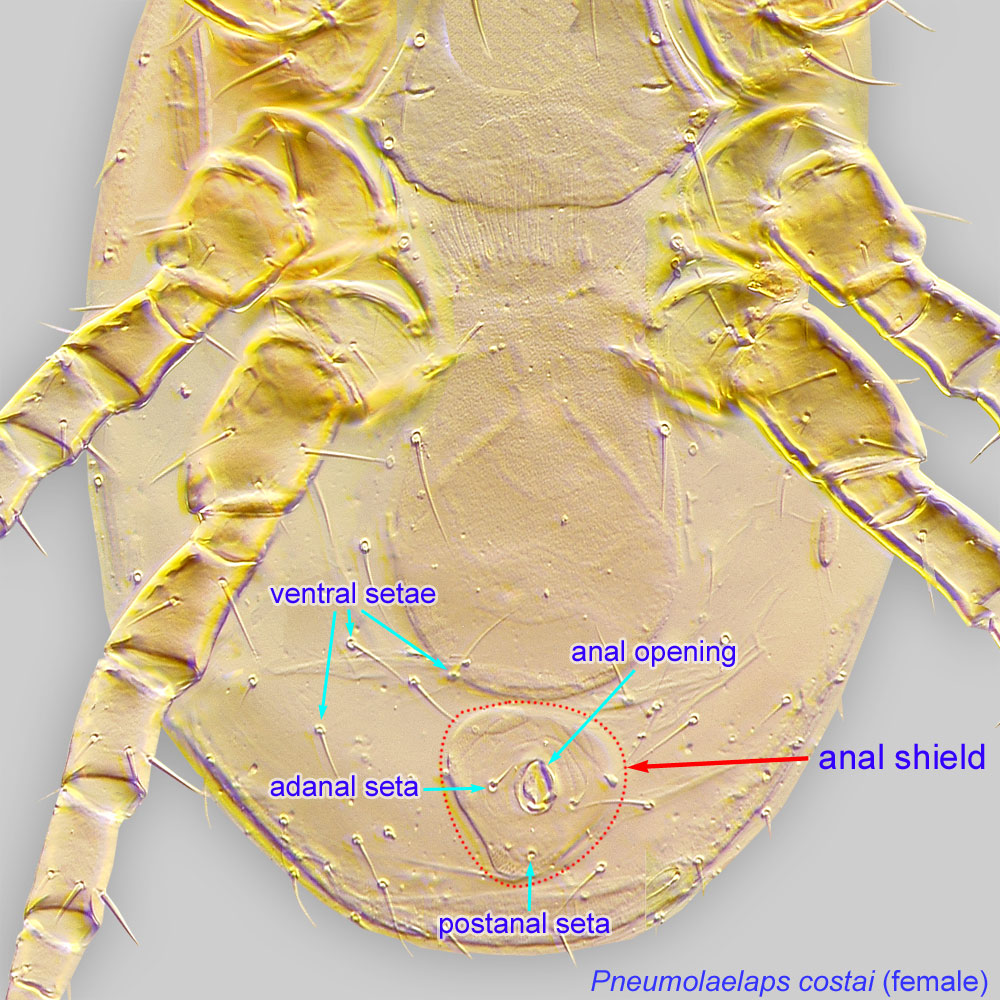 on large ventral plate (Fig. 2).
on large ventral plate (Fig. 2).
Female: Placement of this genus in a family is unsettled. Celaenosthanus was originally placed in the family Antennophoridae (Vitzthum, 1930Vitzthum, 1930:
Vitzthum, H. G. 1930. Acarologische Beobachtungen. (14 Reihe.). Zoologische Jahrbücher. Abteilung für Systematik, Geographie und Biologie der Tiere 281-350.). Later, in a revision of Trigynaspida, it has been suggested that Celaenosthanus represents either a separate subfamily in the family Diplogyniidae, a family in the superfamily Celaenopsoidea, or a family outside Celaenopsoidea (Kethley, 1977Kethley, 1977:
Kethley, J. B. 1977. A review of the higher categories of Trigynaspida (Acari: Parasitiformes). International J Acarol. 3: 129-149.). The following diagnostic characters separating Celaenosthanus from other Celaenopsoidea were cited: the vaginal scleritessclerite:
A component section of an exoskeleton; a plate forming the skeleton of an arthropod.
, although rather large, are membranous, the leg chaetotaxy is much richer than any known celaenopsoid species, the cheliceraechelicera:
Anterior, paired appendage of the body. Primary organ for food acquisition, adapted for chewing, piercing, tearing, sucking, or filtering.
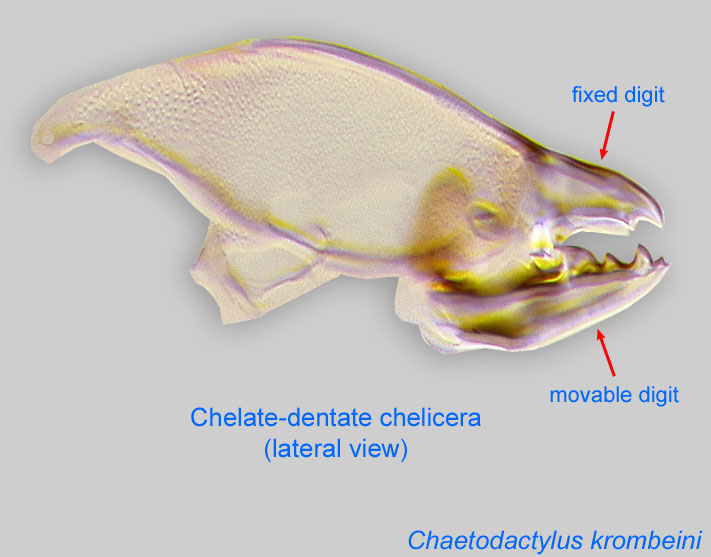 are somewhat reduced, the metapodal sclerotization is completely separate from the ventrianal sclerotization, legs I are antenniform, and the peritremeperitreme:
are somewhat reduced, the metapodal sclerotization is completely separate from the ventrianal sclerotization, legs I are antenniform, and the peritremeperitreme:
Paired, tubular, elaborated extensions of a tracheal system associated with stigmatic openings. Can be chambered, arch-like, and situated on the bases of chelicerae as in Cheyletidae (Prostigmata) or, in Mesostigmata, linear and situated on the lateral sides of the body.
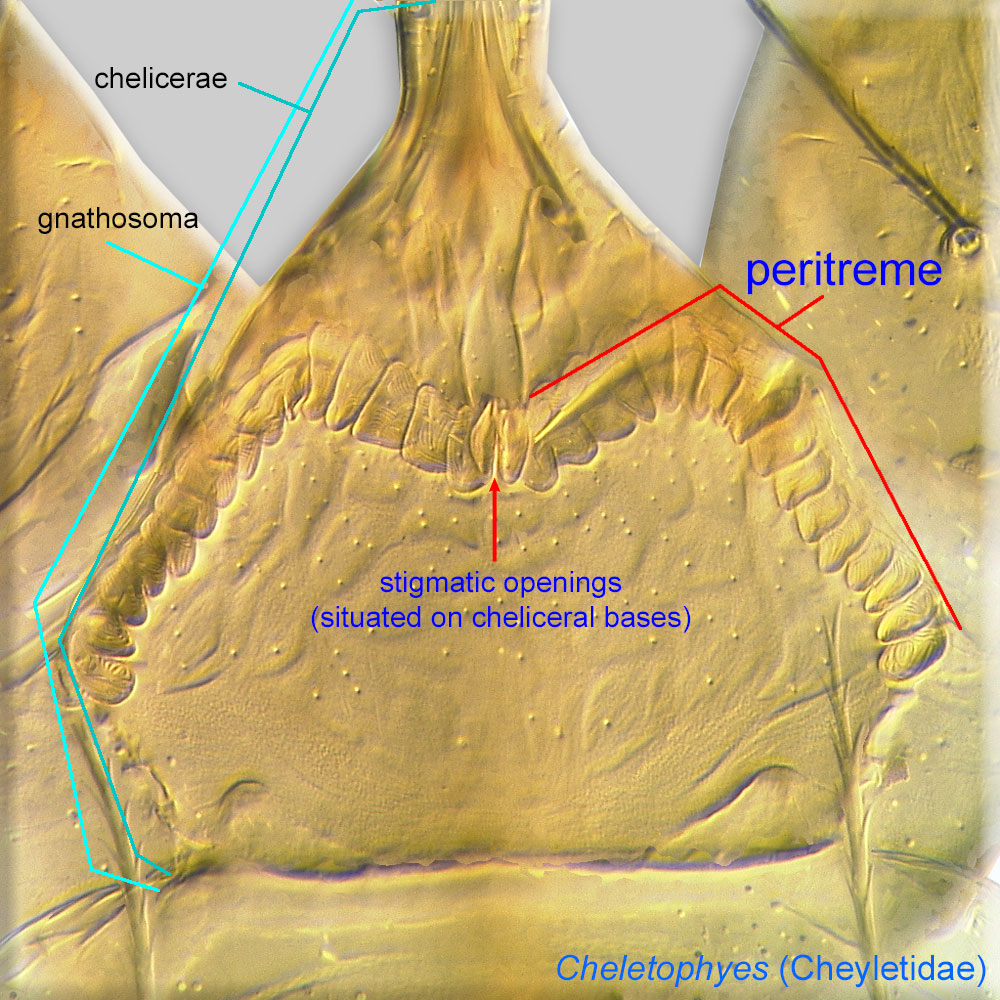 is laterally hypertrophied. Many of these diagnostic character states were scored by Kethley from actual specimens (not available to us).
is laterally hypertrophied. Many of these diagnostic character states were scored by Kethley from actual specimens (not available to us).
No dichotomous key is available. This genus contains one described and two undescribed species (Kethley, 1977Kethley, 1977:
Kethley, J. B. 1977. A review of the higher categories of Trigynaspida (Acari: Parasitiformes). International J Acarol. 3: 129-149.).
Neotropical region
Trigona spp.
permanent permanent:
associated exclusively with bees or their close relative, wasps; cannot live without these hosts
(probably)
All three known species of Celaenosthanus are associated with Trigona and have not been found elsewhere, indicating that species of this genus form permanentpermanent:
associated exclusively with bees or their close relative, wasps; cannot live without these hosts
associations with their hosts. Celaenosthanus trigonophilus has been found in the nest of Trigona fuscipennis, but specific location (nest or phoresyphoresy:
Attaching to or boarding another organism (i.e., a host) for dispersal to new habitats. Can be distinguished from parasitism because feeding typically does not occur.
on adult bee) has not been reported for the remaining two species (Kethley, 1977Kethley, 1977:
Kethley, J. B. 1977. A review of the higher categories of Trigynaspida (Acari: Parasitiformes). International J Acarol. 3: 129-149.). Other aspects of the biology of Celaenosthanus are unknown.